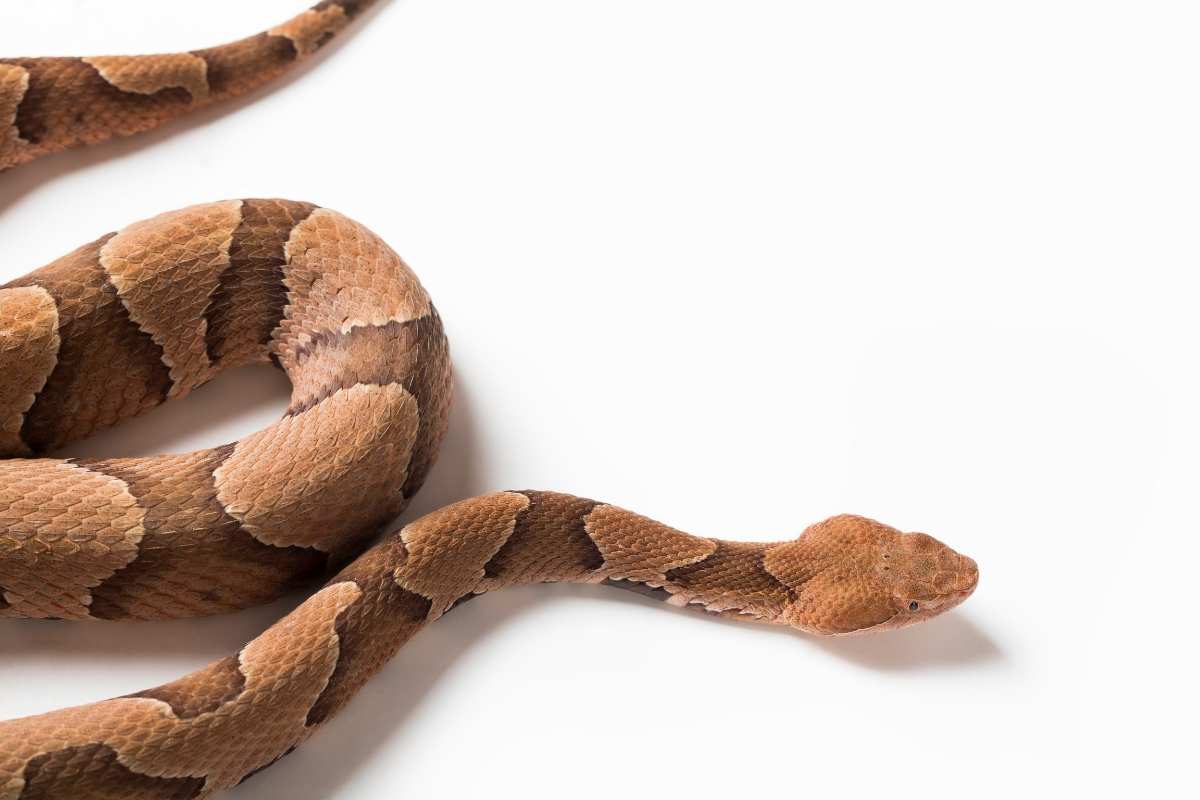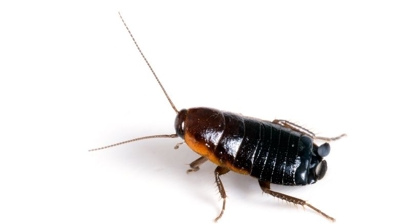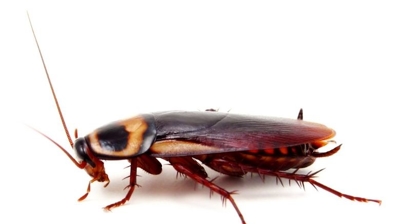
Copperhead Snake Control Services

Copperhead Snakes
Copperhead snakes (Agkistrodon contortrix) are venomous pit vipers native to North America. While they generally exhibit a calm demeanor and are not considered highly aggressive, they can still pose several potential threats and harms. Here are some of the ways copperhead snakes might be considered harmful:
- Venomous Bites: The most direct harm posed by copperhead snakes is their venomous bite. Although copperhead venom is not as potent as that of some other venomous snakes, it still contains a mixture of hemotoxins that can cause significant damage to tissues and blood vessels. A bite can lead to local swelling, pain, and tissue necrosis at the bite site. In severe cases, the venom can cause systemic effects, such as difficulty breathing or even organ failure, though fatalities are rare.
- Potential for Allergic Reactions: Some individuals may experience severe allergic reactions to snake venom, even in small amounts. These reactions can include anaphylaxis, which is a medical emergency requiring immediate attention.
- Risk of Infection: Like any snakebite, a copperhead bite can introduce bacteria into the wound, leading to infection. The venom itself can also make the bite site more susceptible to infection, especially if not treated promptly.
- Danger to Children: Copperhead snakes can pose a heightened risk to young children, who may not be able to recognize the danger or react appropriately to a snake encounter. Their smaller size and developing immune systems make children more vulnerable to the effects of snake venom.
- Toxicity to Pets and Livestock: Pets, especially dogs, and livestock are at risk if they encounter a copperhead. A bite to a pet can result in severe injury or death if not treated quickly. Dogs, in particular, tend to be curious and might provoke a copperhead snake, leading to bites. Copperhead venom can be fatal to smaller animals or those that do not receive timely medical care.
- Psychological Harm: The mere presence of copperhead snakes can induce fear, anxiety, and stress in individuals who live in areas where these snakes are found. For those who are particularly afraid of snakes (ophidiophobia), simply knowing that copperheads are nearby can cause significant distress.
- Agricultural and Outdoor Activity Disruption: In areas where copperheads are common, they can disrupt agricultural and outdoor activities. People working in fields, hiking, or camping may need to take precautions against snake bites, potentially hindering productivity or outdoor enjoyment.
Copperhead snakes generally avoid human interaction and will often try to escape rather than confront people. Most bites occur when a person accidentally steps too close to a copperhead, or if the snake feels threatened. Taking preventive measures such as staying on well-trodden paths, wearing protective footwear, and being aware of one's surroundings can significantly reduce the chances of a harmful encounter with these snakes.
Learn more: Do Copperhead Snakes Bite? || Are Copperhead Snakes Poisonous? || What Do Copperheads Look Like?
Copperhead Snake Removal
Copperhead snakes are generally shy and not aggressively seeking conflict, but removing them from areas where people live and work is important because their presence creates a real risk of accidental encounters. Their camouflage makes them extremely hard to spot in leaf litter, tall grass, woodpiles, or landscaped areas, which increases the likelihood that someone might step on or near one without realizing it. While their bites are rarely fatal with modern medical care, they are painful, medically significant, and often require antivenom, hospital visits, and days to weeks of recovery. Pets are at even higher risk because they tend to investigate or corner snakes, leading to frequent bites and costly veterinary treatment.
Beyond health concerns, copperheads can disrupt normal outdoor activities. Families may feel unsafe letting children play outside, property owners may avoid yard work, and workers—like landscapers, contractors, or groundskeepers—may face elevated occupational hazards. Eliminating the conditions that attract copperheads and removing snakes that settle near homes or commercial properties restores safety and peace of mind. It also prevents the population from establishing itself in high-traffic areas, where the chance of negative encounters increases.
Learn more: How To Get Rid Of Copperhead Snakes
Copperhead Snake Control
Hiring our professional pest control for copperhead snakes is the safest, most effective way to remove these venomous reptiles and prevent future infestations. Copperheads are highly adaptable, secretive snakes that can pose a serious risk to people, pets, and property when they take up residence near homes or businesses. Handling or attempting to remove them without proper training can easily lead to dangerous bites requiring emergency medical care.
Our professional pest control technicians are trained to identify copperhead habitats and entry points, safely capture and relocate the snakes, and apply long-term exclusion and habitat modification strategies to deter their return. We use specialized tools, protective equipment, and proven methods to eliminate both the immediate threat and the underlying causes that attract copperheads—such as rodent activity, overgrown vegetation, and cluttered storage areas.
Beyond removal, our pest control experts can implement preventive measures, including sealing gaps, installing barriers, and reducing environmental attractants. We also provide ongoing monitoring and maintenance, ensuring your property remains snake-free throughout the year.
Our professional copperhead snake control not only protects your family, employees, and pets from venomous encounters but also delivers peace of mind through safe, reliable, and lasting results.
Copperhead Snake Exterminators
Hiring our local exterminators for copperhead snake control provides several clear advantages over relying on a national company. Our local professionals have intimate knowledge of the regional environment, including the specific habitats, seasonal behaviors, and migration patterns of snakes in the area. This allows us to identify likely hiding spots—such as woodpiles, stone walls, wetlands, or overgrown yards—and target our removal strategies more precisely. National companies often rely on standardized protocols that do not account for these regional nuances, reducing their effectiveness.
Our local exterminators also provide personalized, on-site assessments. We evaluate your property’s unique features—like landscaping, water sources, and structural gaps—that attract snakes, and design a customized plan that includes habitat modification, exclusion techniques, and safe removal. National chains typically offer generic packages, which often overlook these subtle but critical factors.
Our response time and ongoing support are faster and more reliable with our local team. Snake issues often require prompt action, especially if a copperhead is spotted in a high-traffic area. Our local exterminators can arrive quickly for inspections, removal, and follow-up visits, whereas national companies often have longer wait times due to centralized scheduling.
Our local team has a reputation to protect within the community. Our accountability is high, and customer satisfaction is more transparent because we know neighbors share experiences. We also provide guidance on long-term preventive measures tailored to your property, rather than one-size-fits-all advice.
Hiring our local exterminators ensures expertise, efficiency, safety, and a customized approach that significantly reduces the risk of copperhead encounters while protecting your property and family.
Where Are Copperhead Snakes Found?
Copperhead snakes are commonly found in a variety of habitats throughout North America, especially in areas where they can easily find shelter, food, and appropriate environmental conditions. They are most likely to be encountered in the following locations:
- Wooded Areas and Forests: Copperheads tend to favor woodlands and forested regions, particularly those with mixed hardwoods, where they can find shelter under logs, rocks, and leaf litter. These areas provide ample cover and hunting opportunities, especially for small rodents and amphibians, which make up a significant portion of their diet.
- Brushy or Overgrown Areas: Copperheads are often found in brushy or densely vegetated areas, including thickets, fields, and edges of forests. The thick underbrush offers protection and a place to ambush prey. If you're walking through tall grass or areas with dense shrubs, be cautious, as copperheads can be well-camouflaged in such environments.
- Rocky Hillsides and Caves: Copperheads are often seen in rocky terrain, including hillsides, cliffs, and areas with piles of rocks or boulders. These places provide them with places to hide and thermal regulation, as they can bask in the sun on rocks and retreat into crevices for shelter.
- Riparian Zones and Wetlands: While not as common in aquatic environments as water moccasins or cottonmouths, copperheads are occasionally found near streams, rivers, and wetlands. The moist conditions of these areas provide a suitable environment for copperheads, as well as easy access to amphibians, small fish, and insects.
- Suburban Areas: Copperheads have adapted to living near human settlements and may be found in suburban areas where wooded lots or parks provide the necessary habitat. These snakes might be encountered in the yards of homes adjacent to forests, where they might seek shelter in piles of firewood, rocks, or under porches.
- Farmlands and Agricultural Areas: Copperheads are sometimes found in agricultural regions, particularly those near woodland edges or in overgrown fields and pastures. They are not typically associated with cultivated fields but may be present in the surrounding natural areas where rodents, their primary prey, are abundant.
- Southern and Eastern U.S.: The copperhead is primarily found in the eastern United States, with its range extending from southern New England down through the mid-Atlantic, southeastern U.S., and parts of the central and southwestern U.S. Its range stretches from southern Maine and southern Michigan to eastern Texas, and as far south as Florida.
- Rocky Outcrops and Hillsides in the Midwest and Southeast: In the southeastern U.S., copperheads are frequently found in hilly and rocky terrain, especially in the Appalachian Mountains, Ozark Mountains, and other areas with varied topography. The warmer climates of the south and the availability of prey make these areas particularly conducive to copperhead habitation.
Copperheads are more active during warmer months, typically from spring through fall, with peak activity occurring in the late spring and early summer. They are primarily crepuscular (active at dawn and dusk) and nocturnal, which means they may be most active at these times, although they can be seen at other times of day, especially on warmer evenings. They spend the colder months in hibernation, typically in sheltered areas like rocky crevices or burrows.
What Do Copperhead Snakes Eat?
Copperhead snakes are carnivorous and primarily feed on small animals. Their diet consists mainly of:
- Rodents: Rodents like mice, rats, and voles make up a significant portion of the copperhead's diet. These animals are abundant in the habitats where copperheads live, and they provide a steady food source. Copperheads are skilled hunters and can ambush these prey items by using their camouflage to remain hidden.
- Amphibians: Copperheads often consume amphibians, such as frogs and toads, which are commonly found near wetlands, streams, and moist environments. These prey animals are a key part of the copperhead’s diet, especially in regions with abundant water.
- Reptiles: On occasion, copperheads may prey on smaller reptiles, including lizards and other snakes. Although they primarily target small animals, they are opportunistic feeders and may go after smaller species of reptiles that they encounter.
- Insects: While not a major part of their diet, copperheads have been known to consume large insects such as grasshoppers or crickets, especially in their younger or smaller stages. Insects may serve as a supplemental food source, particularly in the spring and early summer when other prey is less abundant.
- Birds: Although not common, copperheads may also prey on small birds or bird eggs, especially when they are able to catch them while the birds are on the ground or in nests.
Copperheads don't need to eat every day. Their feeding frequency varies depending on factors like the availability of food and environmental conditions. They may eat every few days or once a week, with the amount of time between meals typically increasing during colder months when they enter a state of reduced activity (brumation).
Copperhead Snake Life Cycle
The life cycle of copperhead snakes involves several stages, from egg to adult, and spans several years. Here's a look at the stages in the life cycle of copperhead snakes:
Mating Season (Spring to Early Summer)
Copperhead snakes typically breed in the spring, following their emergence from hibernation (a period of reduced activity or brumation during colder months). Mating usually occurs between April and June, depending on the geographical location and climate.
Males actively seek out females during this time. They often engage in "combat dances" where two males may wrestle to assert dominance and gain access to a female. The victorious male mates with the female, and fertilization occurs internally.
Egg Laying (Late Summer)
- Ovoviviparous: Copperheads are ovoviviparous, meaning they give birth to live young, rather than laying eggs like many other reptiles. After mating, the female will carry the developing embryos inside her body, and the eggs will hatch internally before the young are born.
- Gestation: The gestation period lasts about 2-3 months. Female copperheads typically give birth to live young in late summer to early fall, usually around August to October. The number of young varies, with a typical litter ranging from 3 to 15 snakes, though it can be larger depending on the size and age of the female.
Birth (Late Summer to Early Fall)
- Live Birth: Unlike some other snakes, copperheads give birth to live young. The young snakes are fully formed when born, and they immediately begin to fend for themselves. They are born with a relatively large, well-developed head and their venomous fangs, though the venom is not as potent as that of adult snakes.
- Size and Appearance: Newborn copperheads are about 6-10 inches long and have a distinctive light, almost yellow or greenish tail tip, which they use to lure prey such as insects and small amphibians.
Juvenile Stage (First Year)
- Feeding and Growth: After birth, young copperheads begin hunting for small prey, such as insects, amphibians, and small rodents. They quickly grow and shed their skin multiple times during the first year of life. As they grow, they gradually begin to take on a more mature coloration, although they retain their light-colored tail tip for a while.
- Survival Challenges: The first year of life is the most vulnerable period for copperhead snakes. Young snakes face numerous threats from predators (such as birds of prey, mammals, and larger snakes) and environmental hazards. Only a small percentage of them make it to adulthood.
Adulthood (2-4 Years)
- Maturity: Copperheads reach sexual maturity at about 2 to 4 years of age. During this time, they have fully developed venom and are capable of capturing larger prey. They continue to grow, but at a slower rate, and they reach their full adult size at around 3-4 years.
- Size: Adult copperheads typically range from 2 to 3 feet in length, with some individuals growing larger. They can live for several years, with a lifespan of 15-20 years in the wild, though many don't survive to reach their full potential due to predation, accidents, or disease.
Reproduction (Every 2-3 Years for Adults)
Once mature, copperhead snakes typically mate every 2-3 years. Females will usually give birth to one litter per year, although the number of offspring per litter can vary depending on the health and size of the female. Copperheads do not form lasting pair bonds, and after mating, males and females go their separate ways.
Decline and Death (15-20 Years)
Copperheads can live up to 15-20 years in the wild, though many do not survive to this age due to predation, accidents, or environmental factors. As they age, copperheads become less active and may not reproduce as frequently. Eventually, they will die of natural causes or be killed by predators or human activities.
By following this life cycle, copperhead populations are able to maintain a stable presence in their habitats, despite the many challenges they face, including predation, competition, and environmental conditions.

Hear From Our Happy Customers
-
"Exceeds Expectations"
I can’t say enough positive things about this company... The tech that came out, Jarvis went above and beyond my expectations. Thank you guys, I will continue using your services.
- Jake M. -
"Great Communication"
Tech was on time, communication was great, and he accommodated my needs.
- Alonzo W. -
"Wonderful Service"
Wonderful service. Jarvis is great. Took care of everything I needed. Thank you!
- Henry P. -
"Fantastic & Patient"
Jarvis was fantastic and patient. He answered my questions with an in-depth explanation and addressed all of my areas of concern. Would love for him to be my assigned tech going forward. Well done!
- Yonnette M. -
"Professional & Considerate"
I’m pleased with Miche services. Jarvis came today. Professional and considerate. Thank you!
- Judy B. -
"Very Knowledgeable"
The tech that arrived was courteous, professional, and very knowledgeable. He was Great.
- Uerial I.



